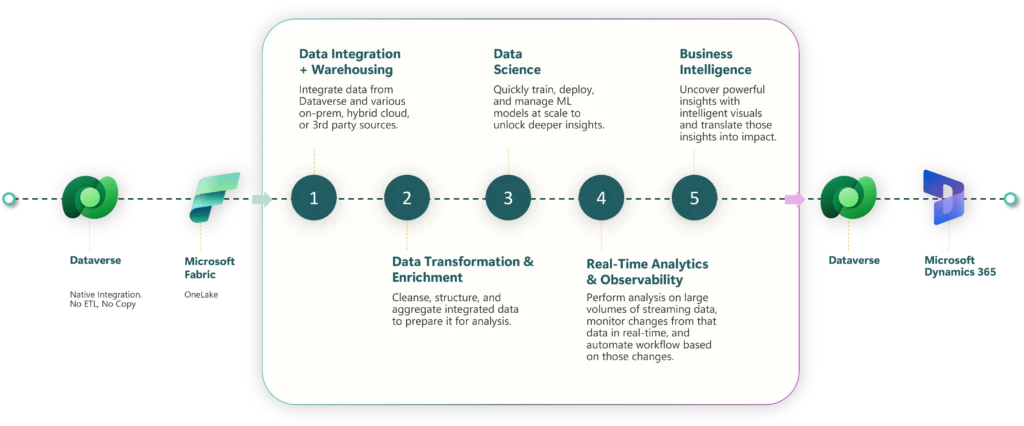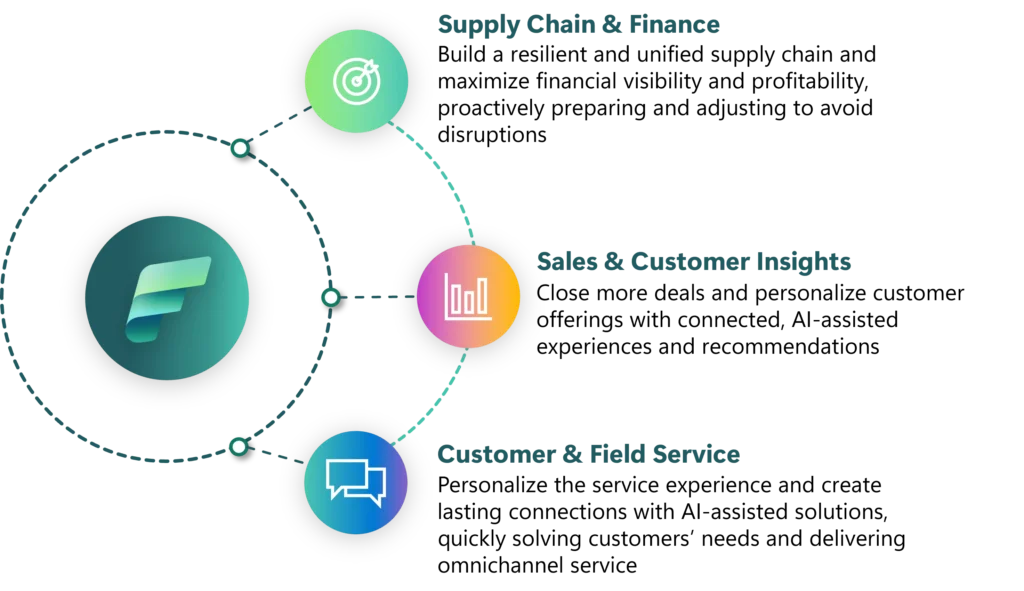Let’s take a look at how data professionals and business decision makers could use Microsoft Fabric to supercharge the Dynamics 365 business application portfolio of products to create a modernized set of systems that help optimize retail store staffing schedules and store layouts to improve the customer experience.

For data engineers, Microsoft Fabric enables data integration into a single source of truth, data transformation, data enrichment and data validation. They play a crucial role in configuring and managing this data integration, ensuring that data from various sources—on prem, hybrid cloud, and 3rd party sources are seamlessly integrated in One Lake. And since Dataverse is natively integrated, you can integrate data from Dataverse with No ETL and No Copy.
In the data warehousing phase, data engineers can scale compute and storage independently and democratize the data estate while guaranteeing fast performance on complex queries enabling millions of predictions in just seconds.
The next step is data transformation and enrichment…data engineers cleanse, structure, and analyze integrated data. They then use additional 3rd party data to enrich that dataset. This step is pivotal in turning raw data into meaningful insights.
In stage 3, with the AI and Machine Learning capabilities in Fabric, Data scientists can build and train machine learning models for predictive analytics.
In stage 4, the real-time analytics capabilities found in Fabric allow analysts to turn insight into action in real time. They can Explore data and perform real-time analysis on large volumes of data streaming from applications, websites, IoT devices, and more. And with a system of detection that monitors your changes in your analytics, they can drive timely actions across the organization with signals and triggers that integrate into a variety of systems.
Lastly, data analysts can utilize the business intelligence capabilities in Fabric to uncover powerful insights with intelligent visuals and translate those insights into impact by embedding visualizations in the systems where business users work.
Now, let’s look at how each of these analytical experiences apply to our hyperconnected retail experience scenario.
How exactly Fabric and Dynamics 365 helps business users (bussiness, marketing, managers)?
Imagine a single experience that leverages not only all of the Fabric analytical experiences, but also the full breadth of the Dynamics 365 suite of intelligent business applications. You can also leverage Copilot in Fabric as well, which combines advanced generative AI with your data to help teams uncover and share insights faster.

From improving inventory management by unifying and analyzing data across store location, business managers can use Supply Chain solutions to create improved, end-to-end visibility. They can also take advantage of Finance solutions to collect financial data from across the organization and view it in OneLake, building models that help forecast financial projections, developing budget reporting templates and setting up alerts for any budget changes.
Marketing managers can create more effective marketing campaigns, learning from browsed products and items in cart to identify potential customers and remarket to them with relevant products, and Sales managers can build reports highlighting near real-time insights that drive higher conversion rates.
Similarly, customer success teams can use Customer Service to drive more meaningful engagement with customers, using AI-assisted solutions to help solve customers’ needs and create lasting customer connections.




